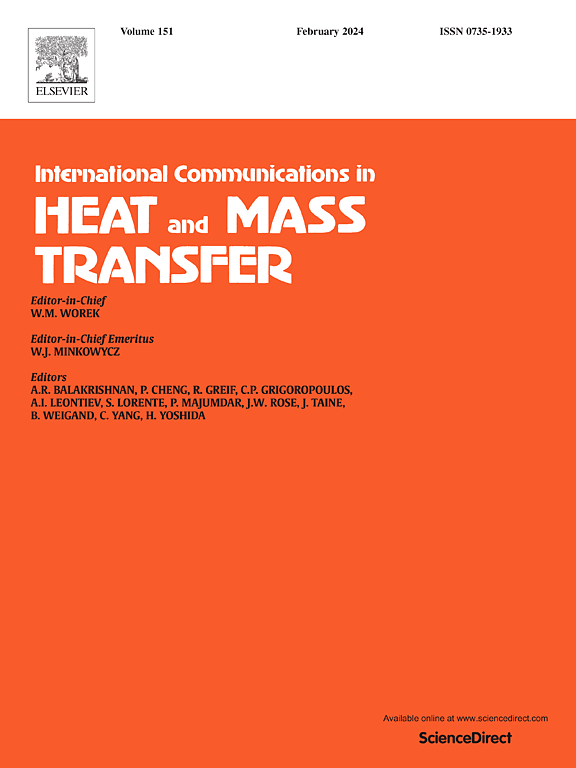A physics-informed neural networks approach for coupled flow and heat transfer problems
IF 6.4
2区 工程技术
Q1 MECHANICS
International Communications in Heat and Mass Transfer
Pub Date : 2025-05-13
DOI:10.1016/j.icheatmasstransfer.2025.109085
引用次数: 0
Abstract
Physics-Informed Neural Networks (PINNs) have demonstrated their capability in solving highly nonlinear partial differential equations, such as the Navier-Stokes equations and energy conservation equations, with only known boundary conditions or limited data, leveraging the universal approximation ability of deep neural networks. As an emerging method, challenges remain when applying PINNs to solve flow and heat transfer problems at high Reynolds or Prandtl numbers. Vanilla PINNs often encounter significant errors when addressing these complex problems. Drawing inspiration from entropy viscosity stabilization techniques employed in direct numerical simulations to mitigate numerical oscillations in high Reynolds number in-compressible flows, we propose an enhanced PINN that incorporates entropy viscosity. This approach modifies the loss function in vanilla PINNs and is applied to solve forced convection heat transfer and mixed convection heat transfer problems in a lid-driven cavity. The results demonstrate that PINNs can accurately predict complex flow and heat transfer phenomena at high Reynolds and Prandtl numbers (Re = 2000, Pr = 7.1), significantly improving computational accuracy and solution stability.
耦合流动和传热问题的物理信息神经网络方法
物理信息神经网络(pinn)已经证明了它们在求解高度非线性偏微分方程(如Navier-Stokes方程和能量守恒方程)时的能力,只有已知的边界条件或有限的数据,利用深度神经网络的通用近似能力。作为一种新兴的方法,应用pin来解决高雷诺数或普朗特数下的流动和传热问题仍然存在挑战。在处理这些复杂问题时,Vanilla pin经常会遇到严重的错误。从直接数值模拟中采用的熵粘度稳定技术中获得灵感,以减轻高雷诺数可压缩流动中的数值振荡,我们提出了一个包含熵粘度的增强型PINN。该方法修正了普通pin n中的损失函数,并应用于求解盖驱动腔内的强制对流换热和混合对流换热问题。结果表明,在高雷诺数和普朗特数(Re = 2000, Pr = 7.1)条件下,PINNs能准确预测复杂的流动和换热现象,显著提高了计算精度和解的稳定性。
本文章由计算机程序翻译,如有差异,请以英文原文为准。
求助全文
约1分钟内获得全文
求助全文
来源期刊
CiteScore
11.00
自引率
10.00%
发文量
648
审稿时长
32 days
期刊介绍:
International Communications in Heat and Mass Transfer serves as a world forum for the rapid dissemination of new ideas, new measurement techniques, preliminary findings of ongoing investigations, discussions, and criticisms in the field of heat and mass transfer. Two types of manuscript will be considered for publication: communications (short reports of new work or discussions of work which has already been published) and summaries (abstracts of reports, theses or manuscripts which are too long for publication in full). Together with its companion publication, International Journal of Heat and Mass Transfer, with which it shares the same Board of Editors, this journal is read by research workers and engineers throughout the world.

 求助内容:
求助内容: 应助结果提醒方式:
应助结果提醒方式:


